Cyrenaica
Q165198Cyrenaica or Pentapolis: the northeastern part of modern Libya, with five - later: six - ancient Greek cities: Euhesperides (modern Benghazi), Taucheira, Barca, Ptolemais, Apollonia, and its capital Cyrene.
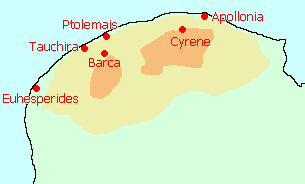
The Cyrenaica offered its inhabitants very fertile land. The prevailing winds are from the north, which means that when they reach the land, they are heavy with the water vapor of the Mediterranean; the clouds empty themselves on the mountains of the Gebel el-Akhdar, and many little rivers flow to the sea, leaving the Cyrenaica unexpectedly green - which is what Gebel el-Akhdar actually means, "green mountains".
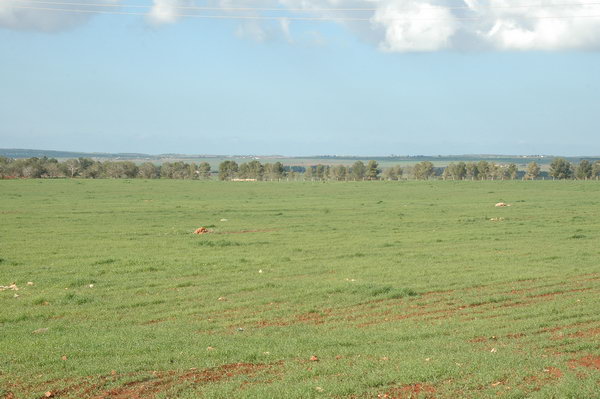
Generally speaking, the Cyrenaica is best considered as several terraces. First, there is the narrow coastal plain, which is bordered by a range of steep hills and rocks; if you climb them, you will reach the second terrace. The third terrace is where the Greek cities of Cyrene and Barca were built. The other three Greek settlements, Euhesperides (modern Benghazi), Taucheira, and Apollonia, are ports on the coastal plain, and so is the sixth city, Ptolemais, which was founded in the Hellenistic age.
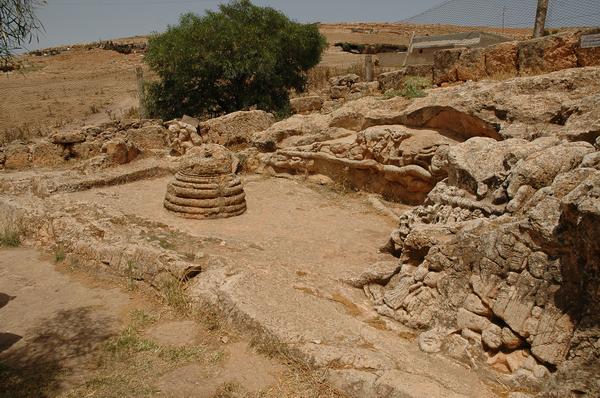
The Greek settlers arrived in a world that had not yet reached the Iron Age, and the life of the Libyan tribesmen is poorly understood. Their sanctuary at Slonta, for example, is impossible to date, because we have neither texts nor datable parallels.
The Cyrenaica was taken over by the Persians after 513. It is not clear how effective control was, although it is likely that it diminished once king Xerxes decided to accept the loss of the most outlying parts of his empire. In any case, after the independence of Egypt in 404, the towns of the Cyrenaica must have been autonomous.
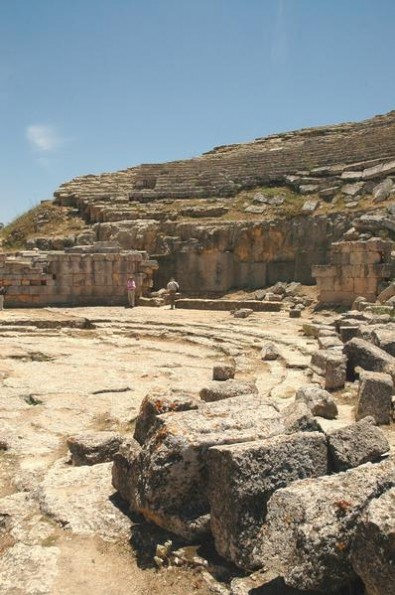
In 331, the Cyrenaicans surrendered themselves to Alexander the Great, and after his death, they became part of the empire of his general Ptolemy I Soter, who sent his general (strategos) Ophellas, who restored order and united all towns in one single province (322). From now on, Cyrene and the Cyrenaica were part of the Ptolemaic Empire, although there were periods of independence, for instance under Ophellas' successor Magas.
Another period of independence was the reign of Physcon, a son of the Egyptian king Ptolemy V Epiphanes. In 163, he was made governor of the Cyrenaica, but he met with much opposition, which he overcame with support from Rome. In this way, Cyrenaica became a Roman protectorate, and indeed, Physcon left his realm to Rome in his will. Although, for several reasons, he was still succeeded by his son Ptolemy Apion, the Romans in the end inherited Cyrene and the other towns. In 74, it became a province, together with Crete.
Cyrenaica enjoyed a lasting peace under a Roman governor. The emperor Augustus presented Cyrene with a new temple for the god Zeus (with a replica of Phidias' famous statue of Zeus), and other emperors gave similar presents. The Asclepion of Balagrae dates from this age. The tranquility was only briefly interrupted in 115, when a Jew named Lukuas claimed to be the Messiah and launched a revolt. There were large-scale destructions, but ultimately, the Romans regained their province, and the emperor Hadrian ordered the Jews to pay for the reconstruction.
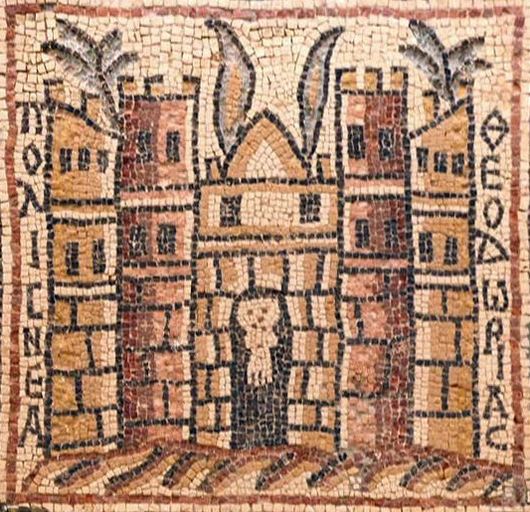
In Late Antiquity, the Roman province was destroyed by barbarian raids. The epistles and the Catastasis of bishop Synesius, written between 400 and 414, offer many sad stories. In c.410, Cyrene was abandoned to the Laguatan nomads.
However, the Romans recovered territory, new cities and forts were founded (Ananeosis; (e.g., Theodorias, Naustathmus, and Boreum), and it was only in the mid-seventh century that the Cyrenaica was lost to the Byzantine Empire: in 642, Barca surrendered to the Arabs; but even after that, Taucheira remained Byzantine.